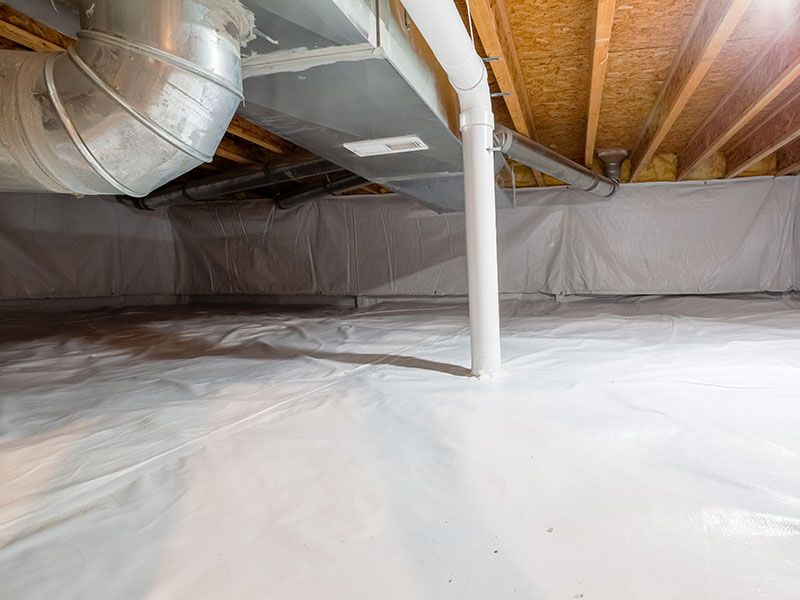
When it comes to maintaining a healthy and energy-efficient home, many homeowners overlook the importance of the crawl space. Often hidden beneath the floorboards, this area can be a source of moisture, mold, and even radon gas. That’s why understanding the role of a crawl space vapor barrier Greeley CO is essential. But what exactly is it, why does it matter, and how much does it cost? This guide breaks down everything you need to know about crawl space vapor barriers, including expert advice from home inspectors and radon experts.
What Is a Crawl Space Vapor Barrier?
Before diving into the benefits and costs, let’s clarify what a crawl space vapor barrier actually is.
A crawl space vapor barrier is a thick plastic or polyethylene sheet installed over the soil in the crawl space beneath your home. Its primary job is to prevent moisture from the ground from rising into your crawl space, which helps maintain a dry environment.
Why Do You Need a Crawl Space Vapor Barrier?
Without this barrier, moisture can seep into the crawl space, leading to:
• Mold and mildew growth
• Wood rot and structural damage
• Increased humidity inside your home
• Attraction of pests like termites and rodents
• Potential increase in radon gas accumulation
What Are the Benefits of Installing a Crawl Space Vapor Barrier?
How Can a Vapor Barrier Improve Your Home?
Protects Structural Integrity
By reducing moisture, a vapor barrier prevents wood decay and foundation issues that can cost thousands to repair.
Improves Indoor Air Quality
Damp crawl spaces can lead to mold spores entering your living space. A vapor barrier helps reduce these allergens, promoting a healthier home.
Boosts Energy Efficiency
Moist air makes your HVAC system work harder. Keeping the crawl space dry helps maintain consistent temperatures and lowers energy bills.
Supports Radon Mitigation Efforts
Radon, a dangerous radioactive gas, can seep through the soil. A well-installed vapor barrier is often part of a radon mitigation system recommended by radon experts.
Discourages Pest Infestations
Moist environments attract pests. A vapor barrier creates a less hospitable space for unwanted critters.
How Much Does a Crawl Space Vapor Barrier Cost?
What Should You Expect to Pay?
The cost of installing a crawl space vapor barrier varies depending on factors like crawl space size, condition, and local labor rates. Here’s a general breakdown:
• Material costs: $0.50 to $2.00 per square foot
• Professional installation: $1.50 to $4.00 per square foot
• Total average: $1,000 to $3,000 for a typical crawl space
Are DIY Vapor Barrier Installations a Good Idea?
While DIY installation might save money upfront, improper sealing or installation can reduce effectiveness. Most home inspectors and radon experts recommend professional installation to ensure a tight seal and long-term protection.
Installation Tips for a Crawl Space Vapor Barrier
What Should You Know Before Installing?
If you’re considering installing a crawl space vapor barrier, keep these expert tips in mind:
• Choose the right material thickness: A minimum of 6 mil thickness is recommended, but thicker barriers provide better durability and moisture protection.
• Seal seams and edges properly: Use special tape or adhesive to ensure a continuous barrier without gaps.
• Extend the barrier up the crawl space walls: This prevents moisture from creeping around the edges.
• Inspect and fix any drainage issues first: Address water leaks or foundation cracks before installing the barrier.
• Consider professional radon testing: Before and after installation, consult radon experts to ensure your home is safe from radon infiltration.
• Regular maintenance: Have your crawl space inspected periodically by home inspectors to catch any issues early.
What Do Home Inspectors Say About Crawl Space Vapor Barriers?
Why Is This Feature Important During Home Inspections?
Home inspectors often flag missing or damaged crawl space vapor barriers as a concern because they directly impact a home’s structural health and indoor air quality.
Inspectors look for:
• Moisture or standing water signs
• Mold or mildew growth
• Condition of the vapor barrier (if installed)
• Proper sealing around crawl space walls
• Potential entry points for radon gas
Their feedback can help homeowners prioritize repairs or installations to avoid costly future problems.
How Do Radon Experts View Vapor Barriers?
Can Vapor Barriers Help Reduce Radon Levels?
Absolutely. Radon experts emphasize that a quality crawl space vapor barrier is a critical component of radon mitigation strategies. While it doesn’t eliminate radon on its own, the barrier minimizes soil gas infiltration by sealing off moisture pathways.
If you live in an area with known radon risks, pairing a vapor barrier with active radon mitigation systems is strongly advised.
Final Thoughts: Is a Crawl Space Vapor Barrier Worth the Investment?
Installing a crawl space vapor barrier offers significant benefits that go beyond simple moisture control. From preserving your home’s structure to improving air quality and supporting radon mitigation, the value is clear.
While upfront costs may vary, investing in a professionally installed vapor barrier often saves money on repairs, energy bills, and health issues down the road. Remember, involving home inspectors and radon experts throughout the process ensures you get the best results and peace of mind.
Conclusion
A crawl space vapor barrier is more than just a plastic sheet—it’s a shield against moisture damage, poor indoor air quality, pest infestations, and radon exposure. Whether you’re a new homeowner or planning renovations, understanding the benefits, costs, and installation tips is essential.
Consult trusted home inspectors Fort Collins CO to evaluate your crawl space, and seek advice from certified radon experts if radon is a concern. Professional installation guarantees the barrier’s effectiveness, providing long-term protection for your home and family.
Ready to improve your home’s health and safety? Don’t overlook your crawl space—it might just be the key to a safer, more comfortable living environment.
